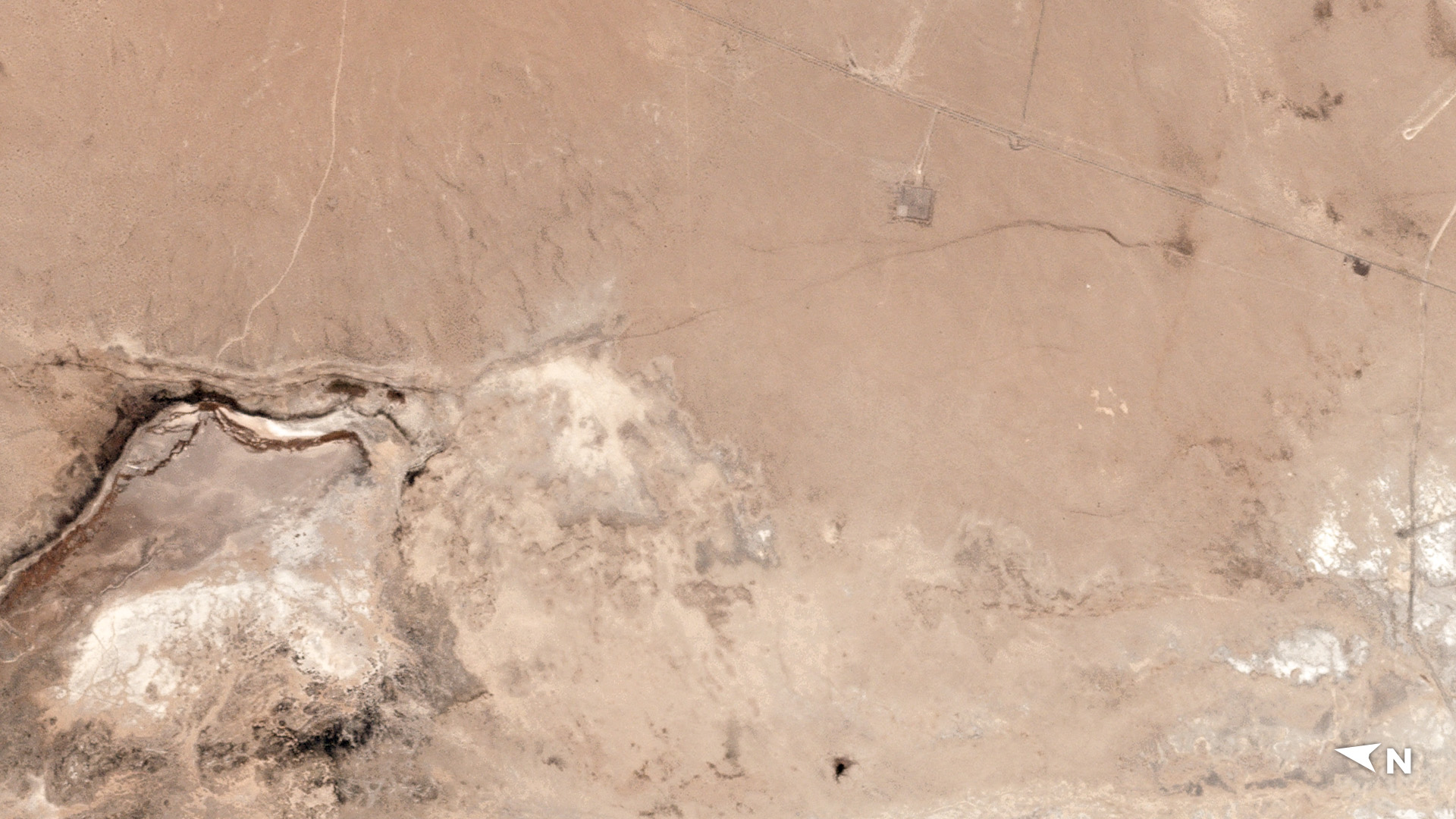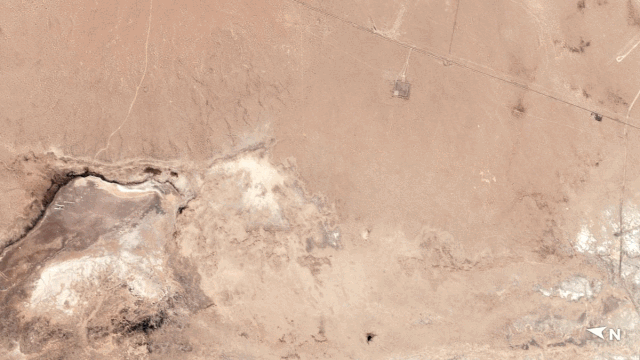
One of last week's powerful Southern California earthquakes created a crack in the planet's crust that's visible from space.
Photos snapped on Saturday (July 6) by tiny Earth-observing Dove satellites, which are built and operated by San Francisco-based company Planet, show a new surface rupture near the desert town of Ridgecrest, about 125 miles (200 kilometers) northeast of Los Angeles.
A day earlier, the Ridgecrest region had been rocked by a 7.1-magnitude temblor — the most powerful quake to hit Southern California in two decades. And Friday's quake was far from alone; it followed on the heels of a 6.4-magnitude tremor that hit the area Thursday (July 4) and spawned a swarm of less powerful aftershocks.

The quakes damaged some buildings near the epicenter but apparently caused no serious injuries, according to the Los Angeles Times.
Planet's Dove cubesats are tiny but extremely capable: Their bodies are smaller than a loaf of bread, but the craft can capture photos with a resolution of 10 feet to 16.5 feet (3 to 5 meters). Planet (previously known as Planet Labs) currently has more than 100 operational Doves in low-Earth orbit, whose imagery the company sells to a variety of customers.
- Planet Labs Photos of Earth from Space (Gallery)
- CubeSats: Tiny, Versatile Spacecraft Explained (Infographic)
- Satellite Photos Help Indonesian Relief Workers Sort Through Earthquake, Tsunami Aftermath
Mike Wall's book about the search for alien life, "Out There" (Grand Central Publishing, 2018; illustrated by Karl Tate), is out now. Follow him on Twitter @michaeldwall. Follow us on Twitter @Spacedotcom or Facebook.
Get the Space.com Newsletter
Breaking space news, the latest updates on rocket launches, skywatching events and more!
Join our Space Forums to keep talking space on the latest missions, night sky and more! And if you have a news tip, correction or comment, let us know at: community@space.com.

Michael Wall is a Senior Space Writer with Space.com and joined the team in 2010. He primarily covers exoplanets, spaceflight and military space, but has been known to dabble in the space art beat. His book about the search for alien life, "Out There," was published on Nov. 13, 2018. Before becoming a science writer, Michael worked as a herpetologist and wildlife biologist. He has a Ph.D. in evolutionary biology from the University of Sydney, Australia, a bachelor's degree from the University of Arizona, and a graduate certificate in science writing from the University of California, Santa Cruz. To find out what his latest project is, you can follow Michael on Twitter.









